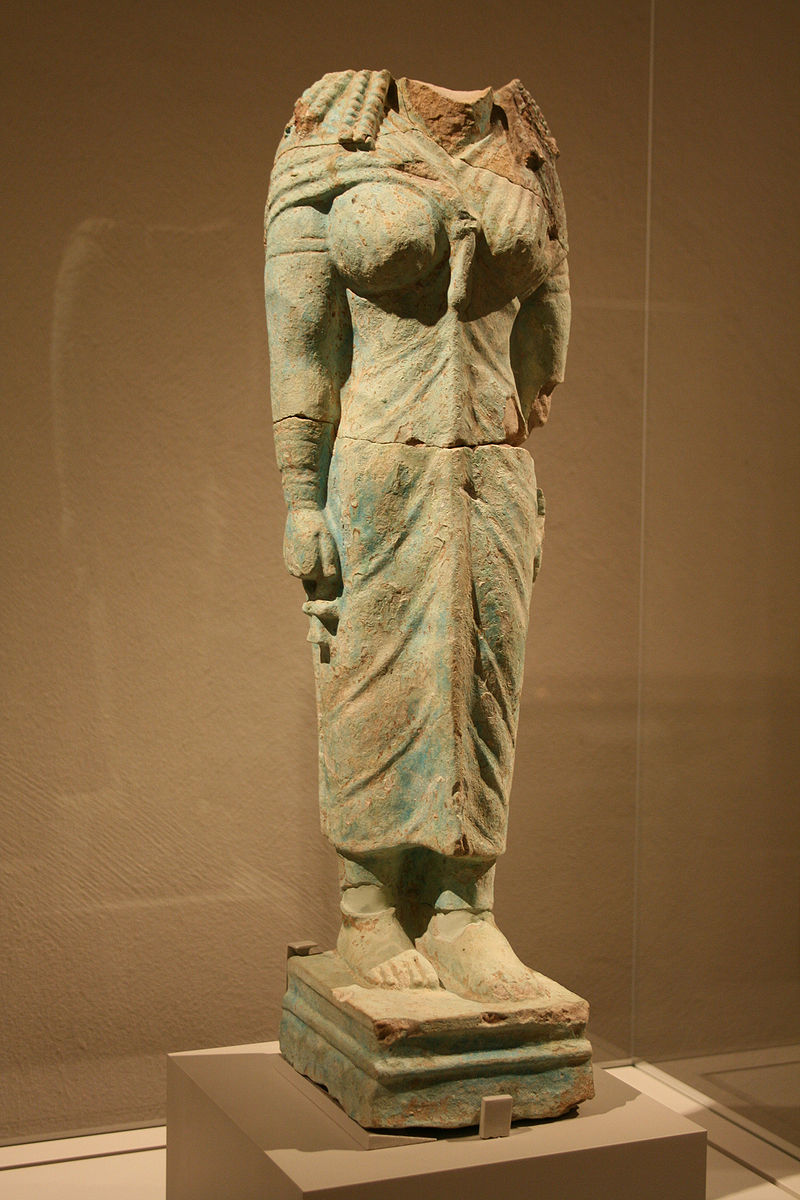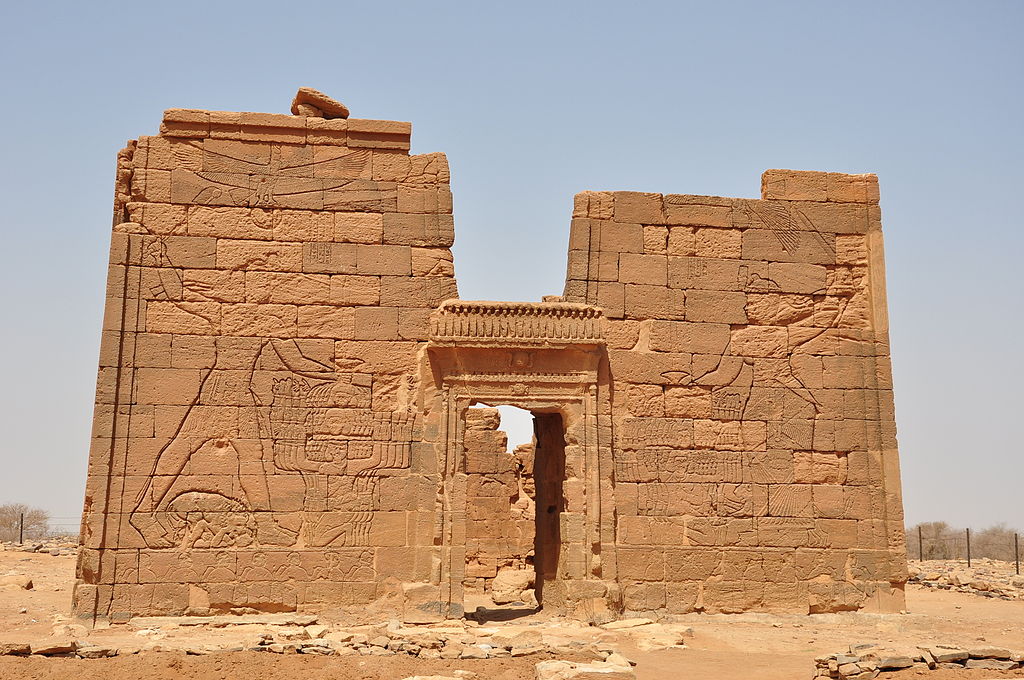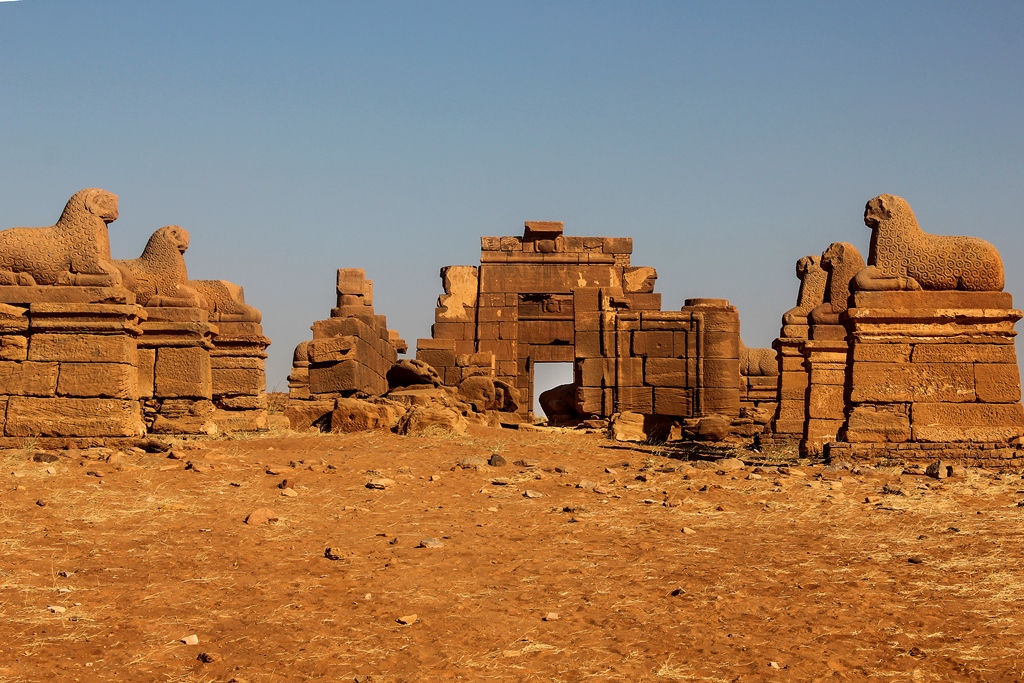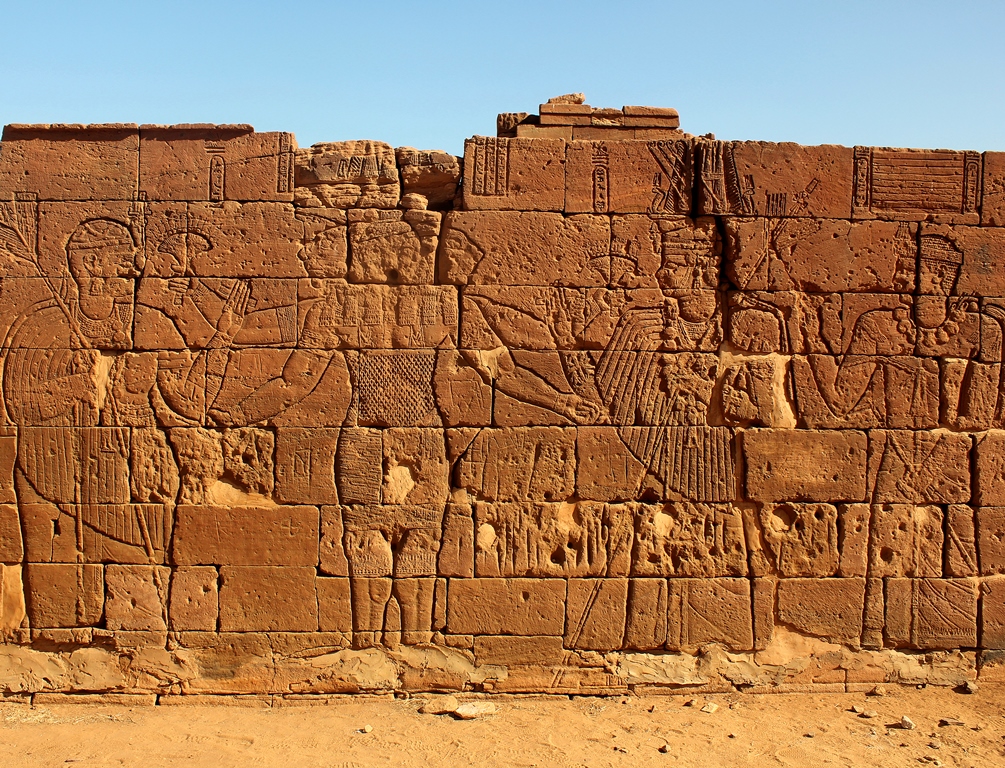Naqa
- Naqa or Naga'a is a ruined ancient city of the Kushitic Kingdom of Meroë in modern-day Sudan.
- Naqa is one of the largest ruined sites in the country and indicates an important ancient city once stood in the location. It was one of the centers of the Kingdom of Meroë, which served as a bridge between the Mediterranean world and Africa.
- With Meroë and Musawwarat es-Sufra it is known as the Island of Meroe, and was listed as a UNESCO World Heritage Site in 2011.
- Naqa comprises several Meroitic temples dating to 4th century BC to 4th century AD, and the ruins of an apparent urban agglomeration and several burial grounds. Archaeologists cited Naqa as one of the most important centres of this first civilization of Black Africa. The remains of various temples were found, but the two largest and most significant temples of Naqa are the temples of Amun and Apedemak , also known as the Temple of the Lion.
- The Amun temple of Naqa was founded by King Natakamani and is 100 metres in length and has several statues of the ruler. The temple is aligned on an east-west axis and is made of sandstone, which has been somewhat eroded by the wind. The temple is designed in the Egyptian style, with an outer court and colonnade of rams similar to the Temple of Amun at Jebel Barkal and Karnak, and leads to a hypostyle hall containing the inner sanctuary (naos). The main entrances and walls of the temple contain relief carvings.
- In 1999 the German-Polish archaeology team explored the area of the inner sanctuary of the temple where the main statue of the god was originally kept. They discovered an undamaged painted "altar", which includes iconography and names written in hieroglyphs of the king Natakamani and his wife Amanitore, founders of the temple. The altar is considered unique for Sudan and Egypt in that time period. A fifth statue of the king Natakamani was also discovered in this chamber along with a commemorative stone stela of Queen Amanishakheto who is believed to have been ruling the Meroites prior to the reign of Natakamani and Amanitore. The obverse shows a delicate sunken relief of the queen and a goddess who was a partner of the Meroitic lion god Apademak. The reverse and sides of the stela contain undeciphered Meroitic hieroglyphs and is considered by the discovery team to be one of the best examples of Meroitic art found to date. After excavation, reconstruction and measurement of the temple of Amun for over a decade, on 1 December 2006, the Sudanese authorities regained management, giving responsibility to the Ministry of Culture.
- Another Amun temple named Naqa 200 and located on the slope of the nearby Gebel Naqa, the mountain overlooking the settlement of Naqa, has been excavated since 2004. It was built by Amanikhareqerem and is similar to the Temple of Natakamani and is dated to the 2nd or 3rd century AD, although some finds do not correspond to the precise dating, adding to an already fuzzy understanding of Nubian chronology.
-
Located to the west of the temple of Amun is the temple of Apedemak (or the Lion Temple). Apedemak was a lion-headed warrior god worshipped in Nubia. The god was used as a sacred guardian of the deceased hereditary chief, prince or king. Anyone who touched the chief's grave was said to be cursed by this Apedemak.
The temple is considered a classic example of Kushite architecture. The front of the temple is an extensive gateway, and depicts Natakamani and Amanitore on the left and right exerting divine power over their prisoners, symbolically with lions at their feet. Who the prisoners are exactly is unclear, although historical records have revealed that the Kushites frequently clashed with invading desert clans. Towards the edges are fine representations of Apedemak who is represented by a snake emerging from a lotus flower. On the sides of the temple are depictions of the gods Amun, Horus and Apedemak keeping company in the presence of the king. On the rear wall of the temple is the largest depiction of the lion god, and is illustrated receiving offering from the king and queen. He is depicted as a three-headed god with four arms. The north-front shows the goddesses Isis, Mut, Hathor, Amesemi and Satet. Inside the temple is a carving of the god Serapis who is depicted with Greco-Roman style beard. Another god with a crown is depicted but is unidentified, but believed to be of Persian origin.
- Although the architecture of the main Apedemak temple is strongly influenced by Ancient Egyptian architecture, exhibiting some classic Egyptian forms, some of the depictions of the king and queen are fine examples of the differences between Egyptian and Kushite art. King Natakamani and Queen Amanitore are depicted with round heads and broad shoulders, with the relief of Amanitore having unusually wide hips, which is more typical of African art. So the temple of Apedemak illustrates profoundly the fusing together of artistic influences by the Kushites. The depiction of Apedemak displaying a lotus flower is also somewhat unusual, and initially led early archaeologists of Naqa to speculate that the temple had Indian influences, given that trade routes from India led to the ancient Red Sea port of Adulis, in modern-day Eritrea. These connections are still being explored by modern archaeologists.
Read more: https://en.wikipedia.org/wiki/Naqa
This page uses materials from Wikipedia available in the references. It is released under the Creative Commons Attribution-Share-Alike License 3.0.
References




